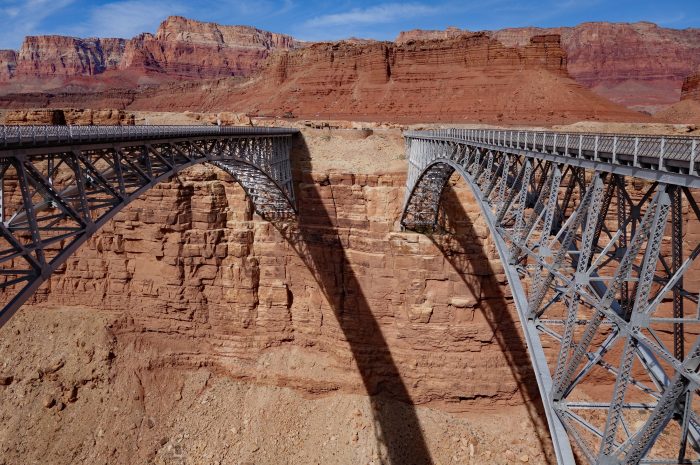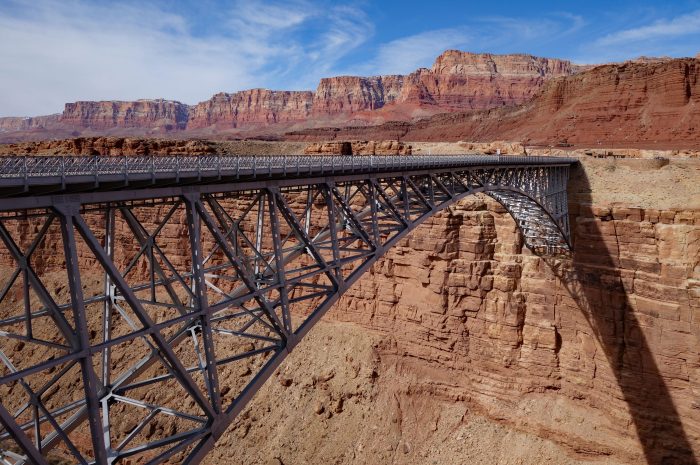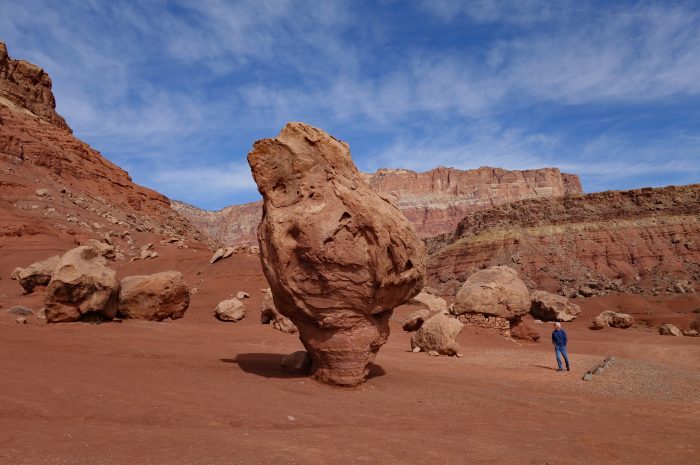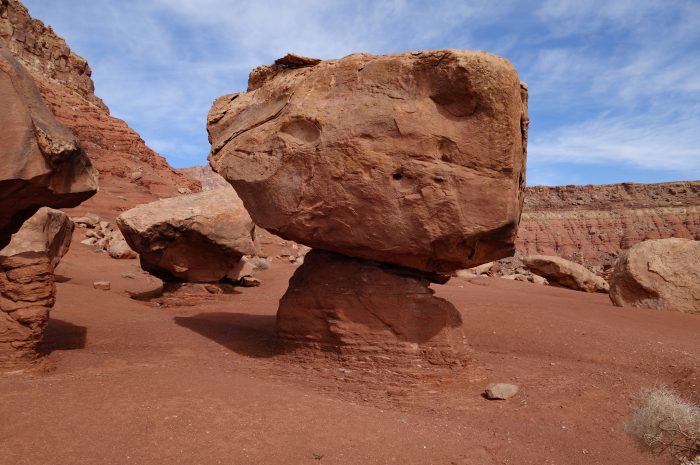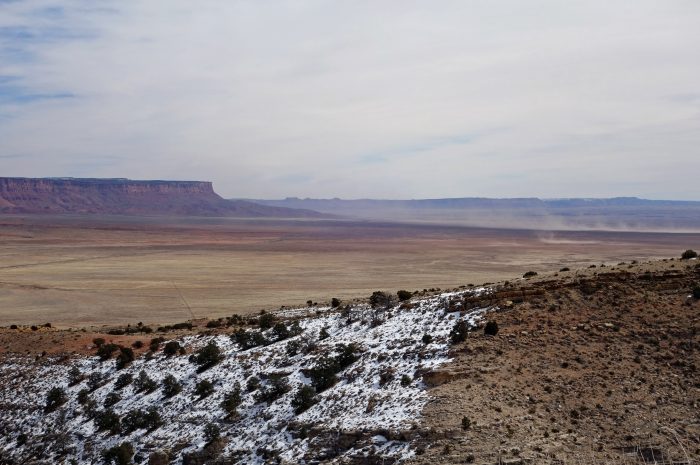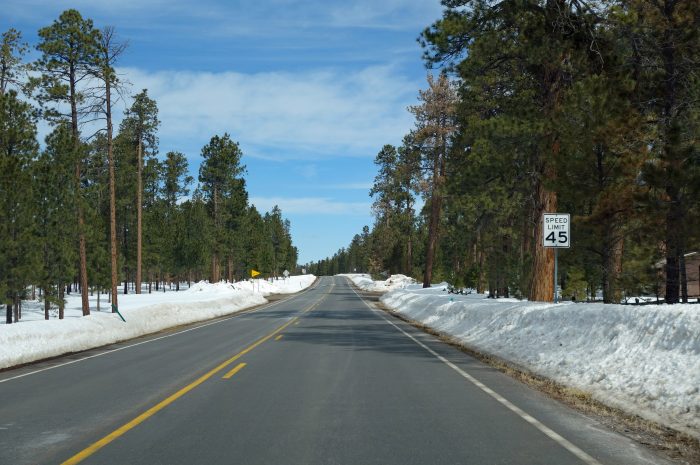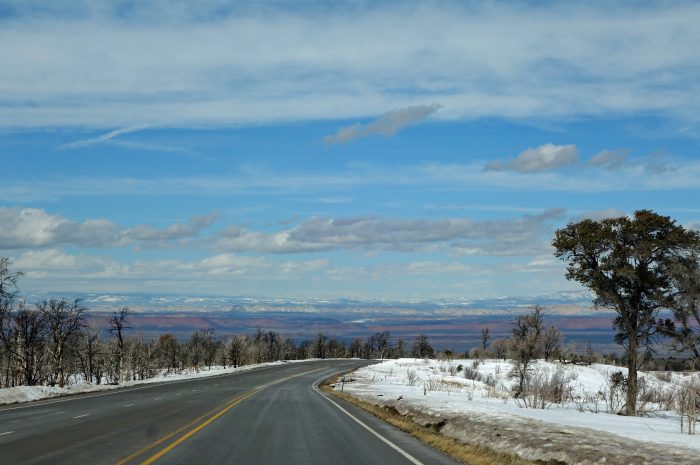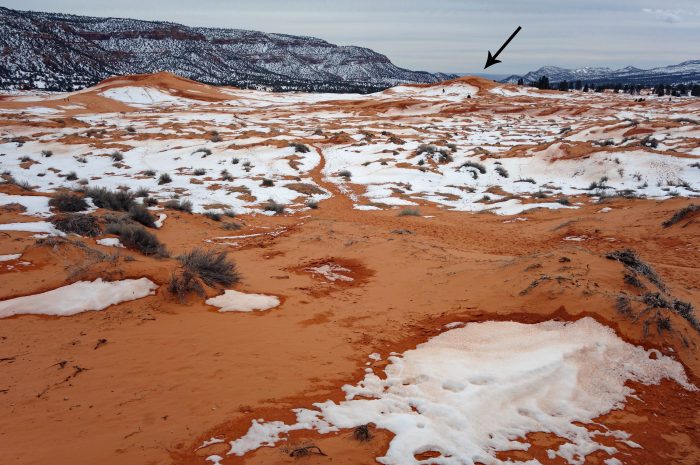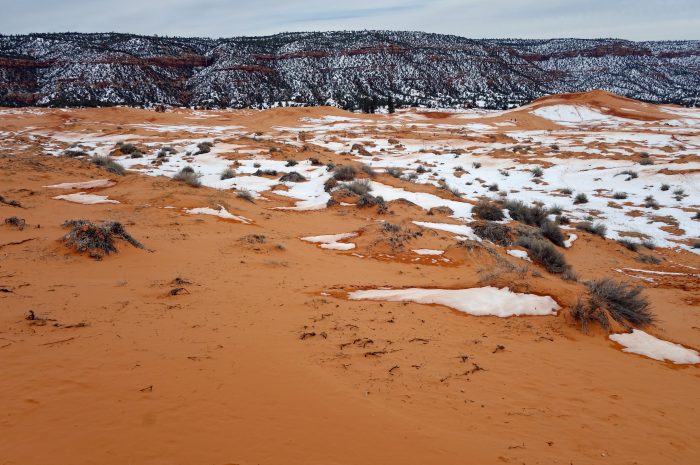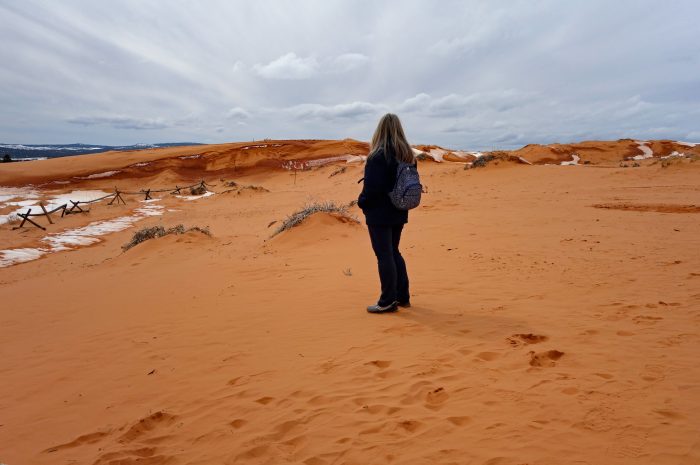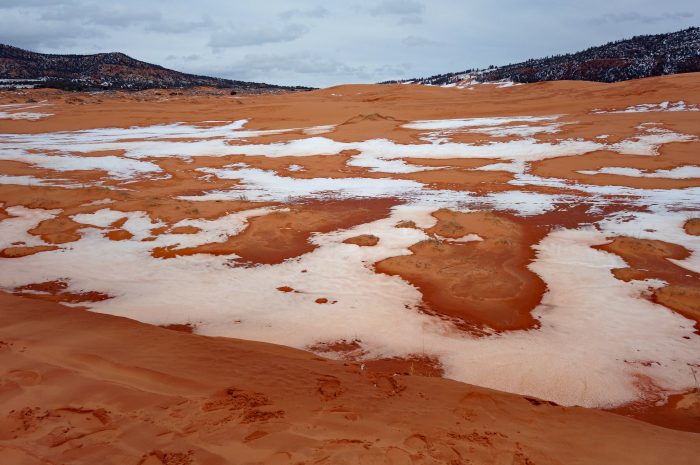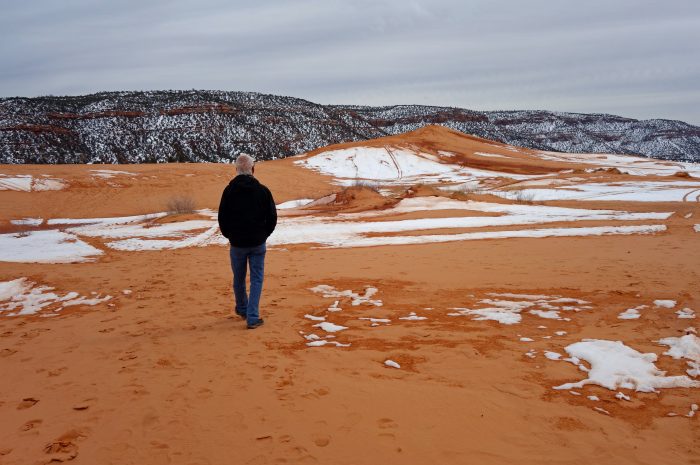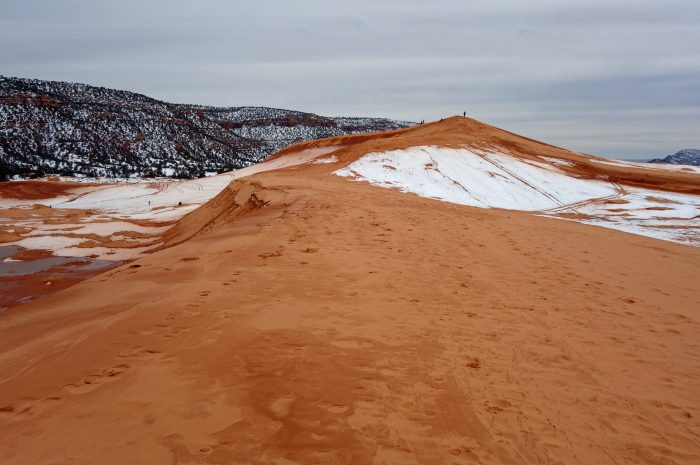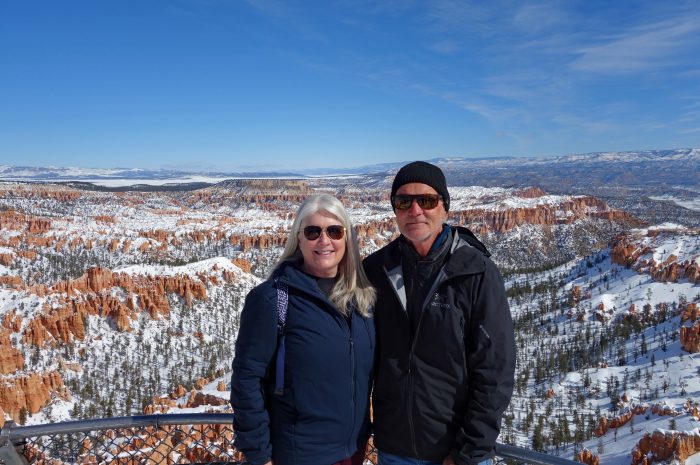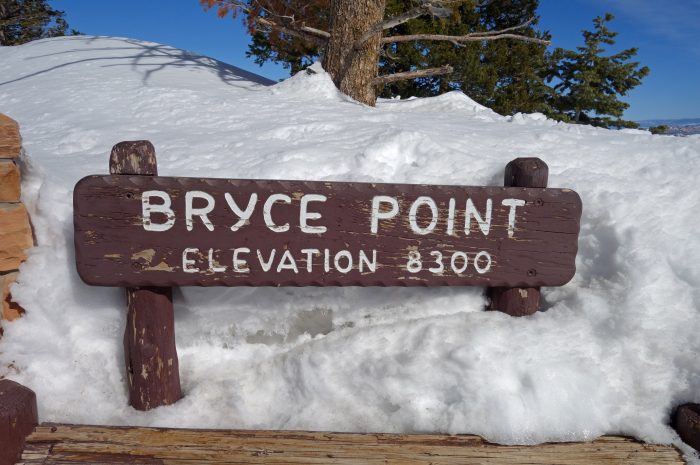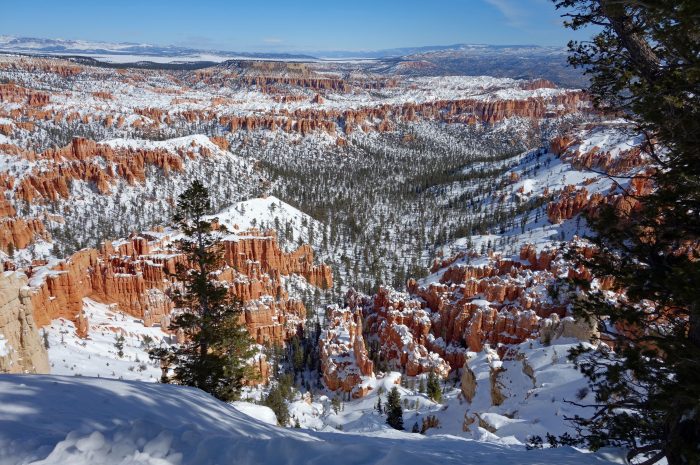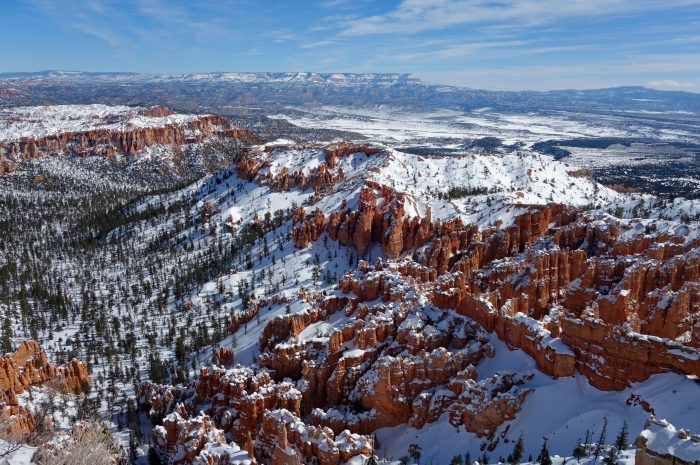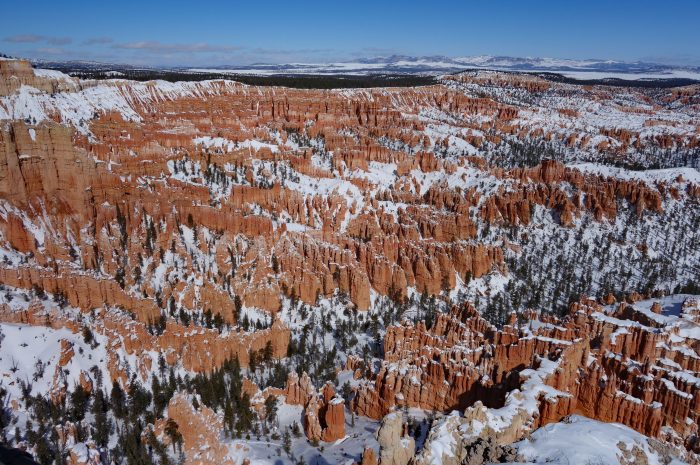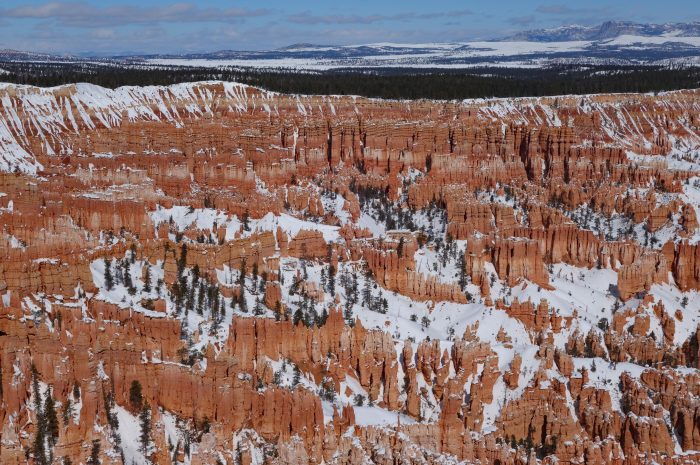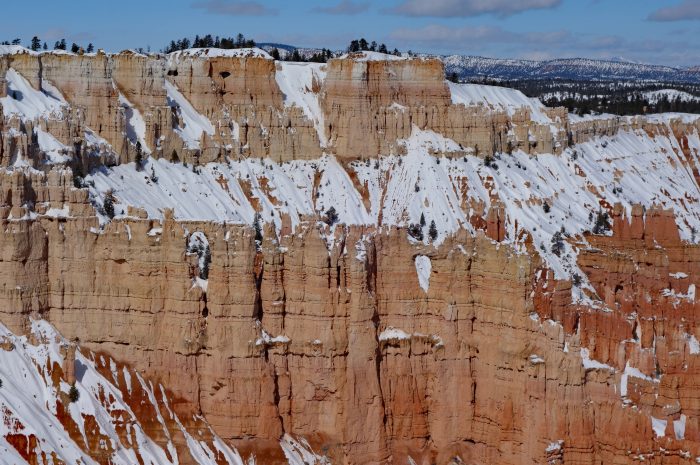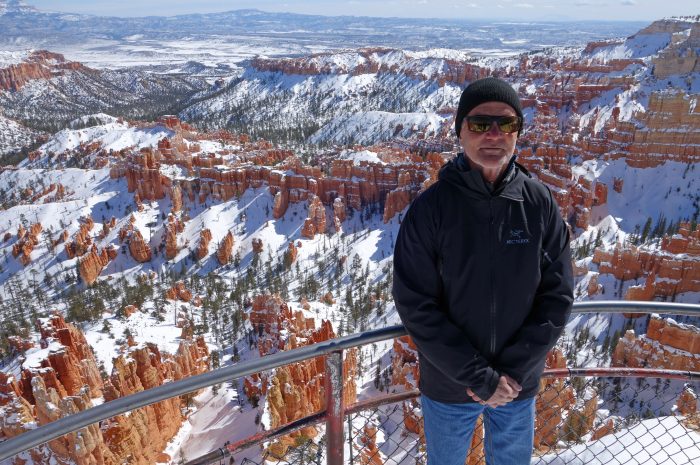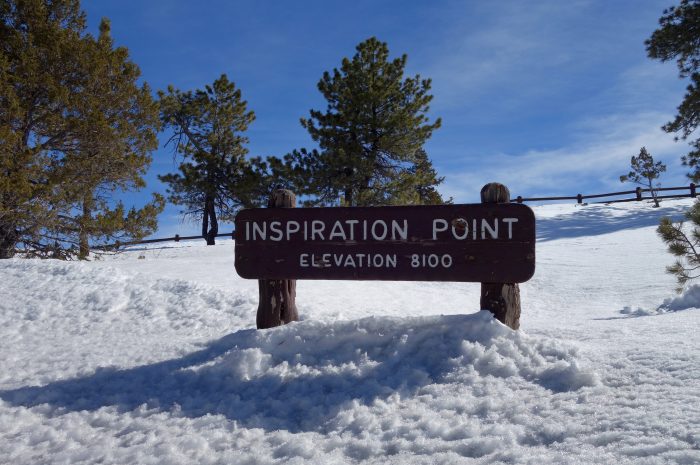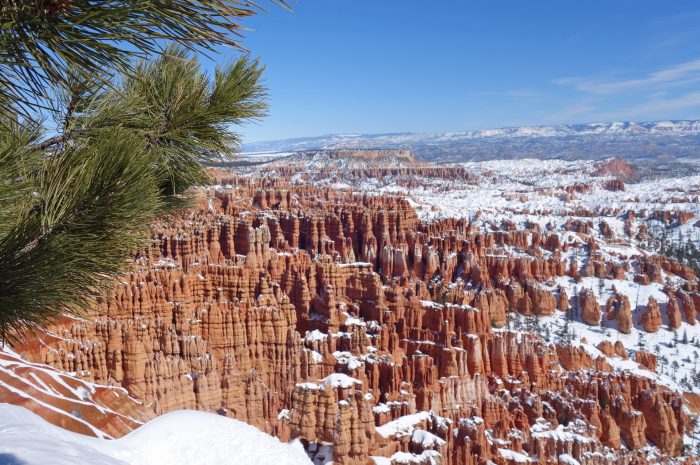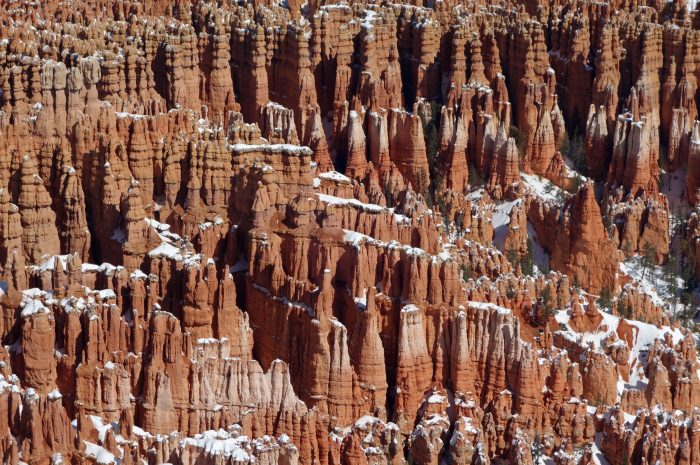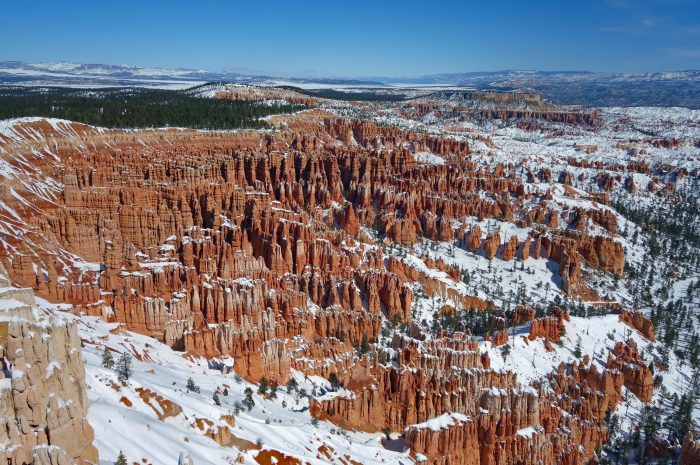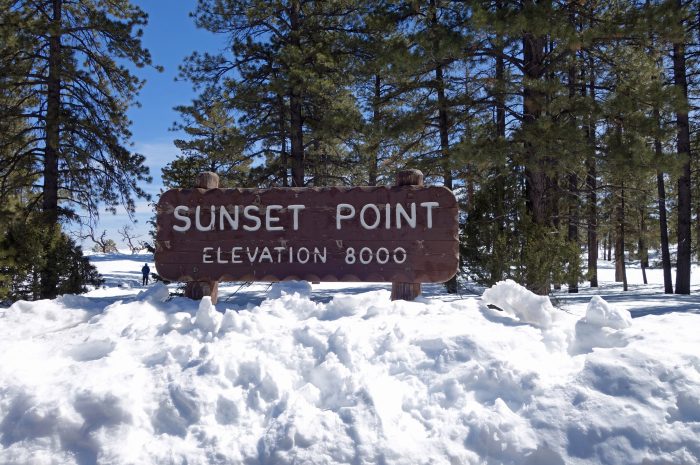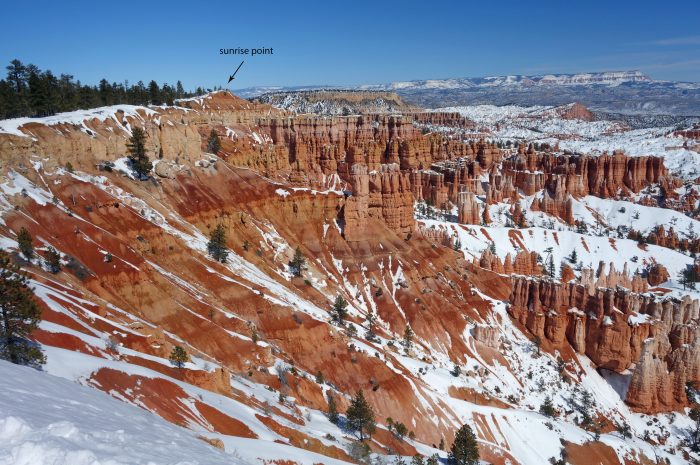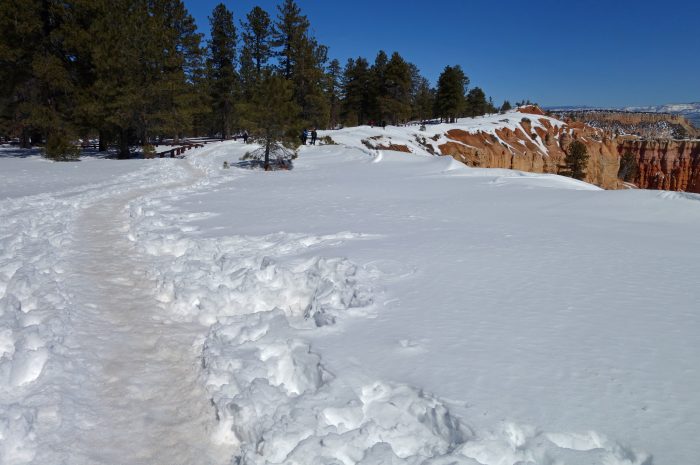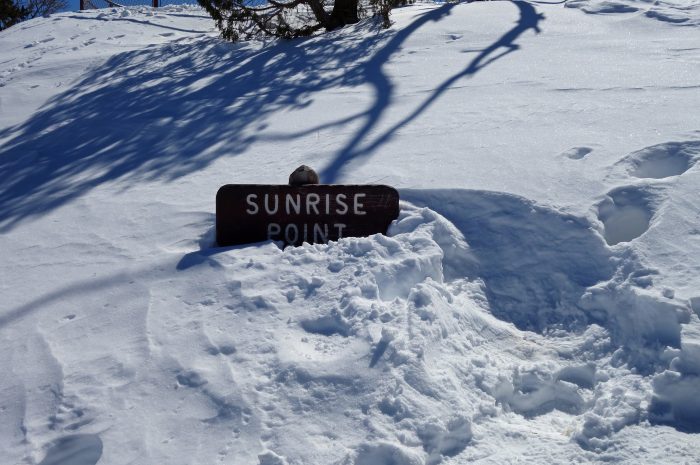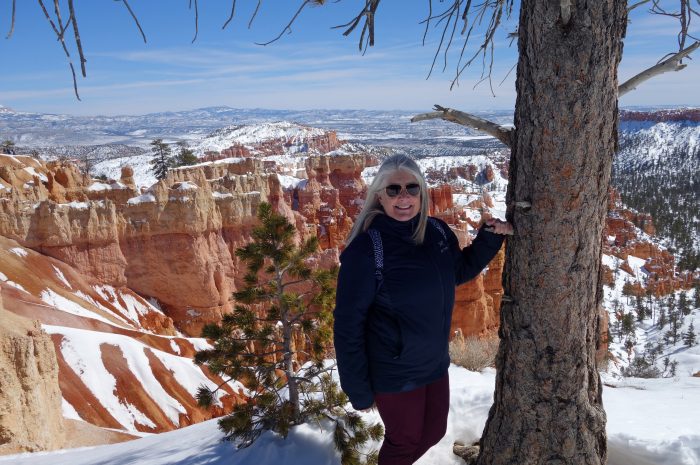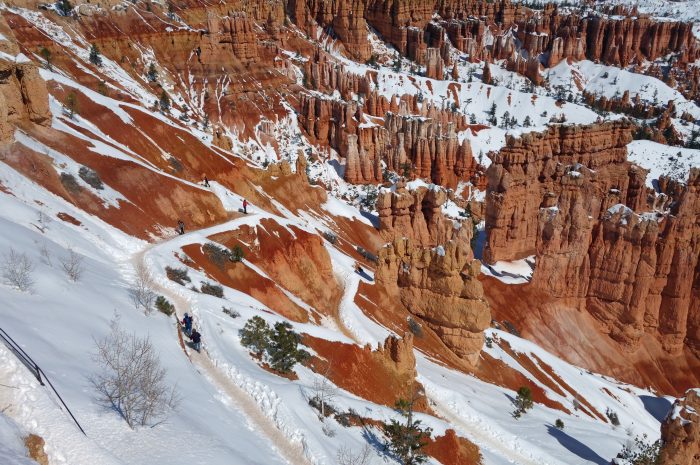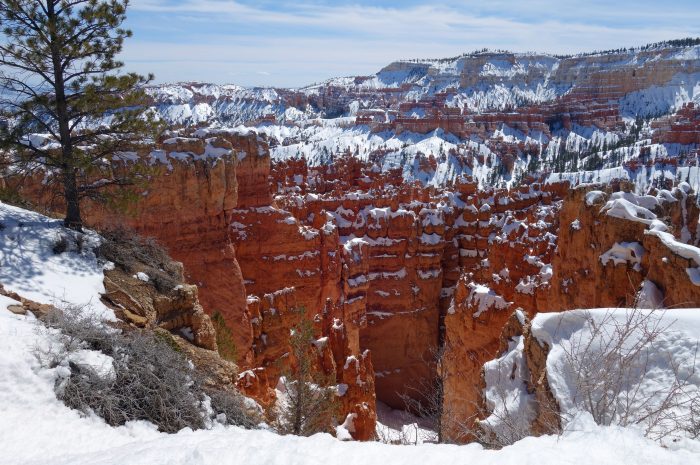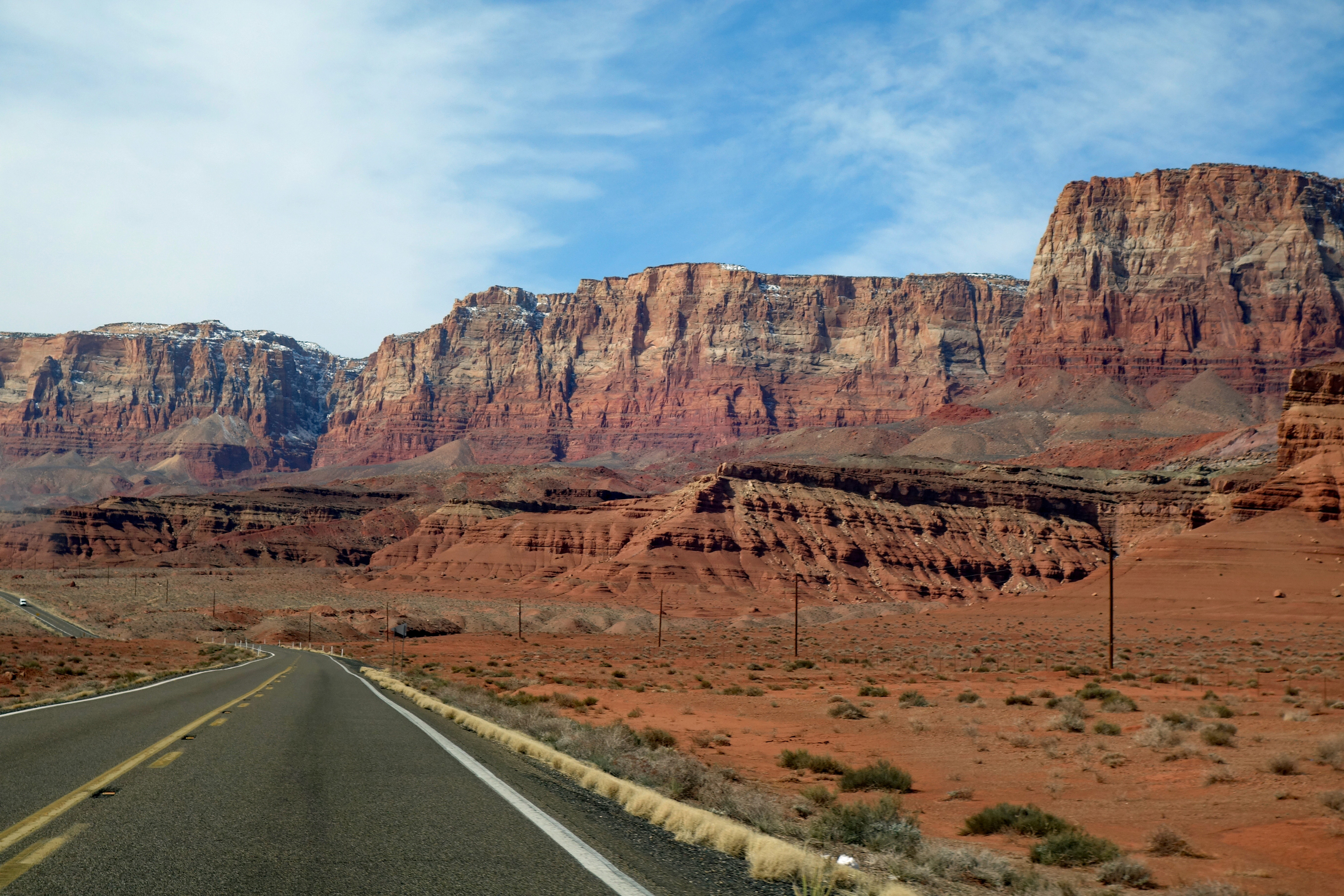
When we left Page, Arizona we took the long route to Kanab, Utah via Highway 89A which took us south of Page, through Bitter Springs then heading back north towards Marble Canyon where we crossed the Colorado River. It’s at this crossing you will find the Historic Navajo Bridge, there are actually two bridges here, one for cars and one for pedestrians. There is a small market on the east side of the canyon and an interpretive center on the west side. The historic bridge was built in 1929 and served the area for 66 years until vehicles became wider and heavier and the need for a stronger bridge was evident. The second bridge was completed in 1995 and the historic bridge remained to serve as a pedestrian bridge and provide visitors with a breathtaking view of the Colorado River 467 feet below. Sitting side by side over the canyon these bridges are eye catching and are one of only 7 crossing of the Colorado River for 750 miles.
Leaving Marble Canyon we began our journey through and around the spectacular Vermillion Cliffs National Monument. The first place we came upon was the Cliff Dwellers Stone House. The Stone House was built in the late 1920’s by a couple passing through the area who were stranded and then drawn by the beauty of the area to remain. They stayed for 10 years until the remoteness became too much, their original structure partially remains today. There are a number of giant boulders around the house that have fallen from the cliffs above and the soft rock below has eroded away leaving some of them perched quite precariously. It’s an interesting place to stop if you are passing by.
Leaving the plains below the cliffs we began a steep ascent up into the Kaibab National Forest where we were greeted with a significant amount of snow lining the roadside. Near the Jacob Lake area we hit an elevation of 7,921 ft and a temperature of 2 degrees celsius, no wonder there is still so much snow up here!! From Jacob Lake we began our descent back to the desert plains and into the town of Kanab, Utah. It’s cold here as well and there is still snow on the ground in front of our Airbnb 🥶
Kanab is a small town just north of the Arizona state line surrounded by towering Navajo sandstone cliffs. and is a great base for exploring southern Utah. Just 30 minutes from Kanab is the Coral Pink Sand Dunes State Park, located at an elevation of 6,000 ft. The park was established in 1963 serving as an access point to the sand dunes for recreational use, a pass costs USD $10 to hike among the dunes. The 1,200 acres of dunes tucked along the Vermillion Cliffs are created by high winds being funneled through a notch in the mountains to the south. The increased wind velocity picks up grains of sand from the eroding Navajo sandstone beds depositing the sand in the open valley north of the notch, thereby creating the dunes. The color of the sand results from high concentrations of iron oxides and being light enough to be picked up by the wind it feels like powder. The snow made a pretty contrast to the coral colored sand.
The Grand Staircase-Escalante National Monument is a geological phenomenon located in Utah, so called for the series of plateaus that descend from Bryce Canyon in the north all the way to the Grand Canyon in the south. The plateau is marked by five vertical drops at the Pink Cliffs, Grey Cliffs, White Cliffs, Vermillion Cliffs and Chocolate Cliffs. Combined, these plateaus reveal the earths history over 525 million years!!
90 minutes north of Kanab is Bryce Canyon, so we did our research and planned a full day in the National Park. Unfortunately because of the large amount of snow still remaining, the majority of the road beyond the park gates is still closed. Our original plan was to drive the 17 miles from the park gate to the end of the road at Rainbow Point, working our way back stopping at various viewpoints and doing some short hikes. But, the road was only open 3 miles into the park and only 4 viewpoints open, all overlooking the Bryce Amphitheater. Despite a shortened visit, the snow in the valley is a stunning contrast to the red rocks, pink cliffs and spires. Our first viewpoint was Bryce Point, the southernmost viewpoint currently open and situated at an elevation of 8,300 ft. We were totally blown away by the views from here and have never seen anything quite like it 💕
Next we worked our way back to Inspiration Point at an elevation of 8,100 ft, but this is the lower viewpoint. We hiked up through the snow to Upper Inspiration Point and the views were well worth the hike. In our opinion these were the best views we had all day!!
Our final stop was the Sunset Point lookout, this was the busiest parking lot and it took a few loops around before we found an empty space. From Sunset Point there is a 1.2 mile out and back trail along the rim to Sunrise Point. Our walk started off on a wide concrete pathway but quickly deteriorated to a well worn track through the snow, but easily manageable so we carried on with the walk. These two viewpoints are starting points for a number of hikes down into the canyon. We had hoped to do a couple of the shorter ones but the trails down in the canyon were steep and snow covered so that idea went out the window. We saw quite a few people headed down but they were well prepared with hiking poles and metal cleats for their boots.
Despite having our visit severely curtailed by the snow, the views over the canyon are simply breathtaking, and the geological wonders here defy description. Bryce Canyon has been referred to as Poetry in Stone as the forces of weather and erosion are constantly recomposing the scenery before you. Hoodoos exist on every continent but Bryce Canyon has the largest concentration found on Earth and having seen photographs of summer and winter, I think the contrast of the white snow, blue sky and red rocks is more beautiful in winter. So glad we came here, and a return visit would be amazing!!

Southern Utah seems to have a lot more snow than usual right now so before leaving Kanab we popped into the visitor center to inquire about what roads were open between here and our next destination. During the course of our questions we found out that the USD $35 we paid for our day pass into Bryce Canyon may be used towards an annual National Park Pass. When we bought our park pass at Bryce Canyon the park employee advised we did not qualify for the USD $20 annual Senior Pass because we are Canadian….hmmmm???? But, she did not explain to us that the regular annual pass is only USD $80 which would be a savings for us over the next couple of weeks as we plan to visit a few other National Parks. So, receipt in hand we will see if we can use the USD $35 we already paid towards an annual pass as we make our way to our next destination in Utah…..
